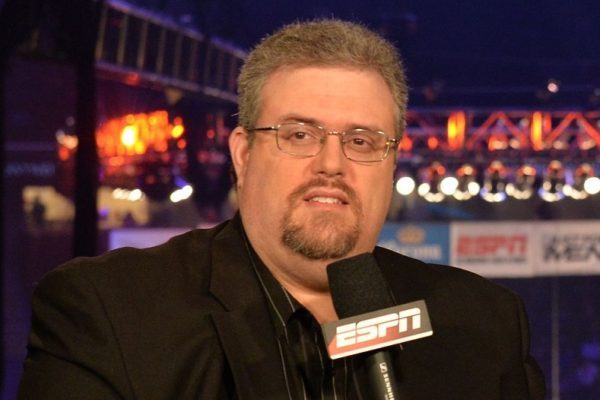The last time a global pandemic was this deadly, you have to go back to the 1918 influenza outbreak when there was no internet or television, and radio was in its infancy. Likewise sports was a far cry from what it is now– many athletes were looked down upon as they were considered beneath the educated businessmen and people contributing something to society other than a game. How times have changed.
Program directors and network executives have had to make hairpin turns on the content calendar before with rainouts, natural disasters, or even the September 11th terrorist attacks. But compared to Coronavirus, those were short-term breaks from the action. The sports world got back on its feet 10 days after the September 11th attacks, but the Coronavirus will likely keep things on pause for another 2 to 3 months at a minimum. So how do you work together to create something while waiting for the sports world to start up again?
I reached out to several program directors and executives while also reaching into my own bag of tricks when trying to answer the question of, “What do we do now?” The people I spoke with did so on background, but all are confronting the same issue with the unique perspective of ALL sports stopping at the same time. Here is the path they are walking down for the foreseeable future:
DON’T READ THE FINE PRINT
Unprecedented times call for unprecedented measures, and that includes the necessity of teams and broadcast partners to not bicker over contract language. Everyone I spoke with agreed that things like rights fees and trade details will all get worked out at some point in time. When it comes to content though, the key is to think “win-win” for everyone. This means teams and rights holders should be collaborating on a consistent broadcast schedule that gives everyone the right amount of air time to stay on the radar. But both sides should also try to assist one another in commercial clearances, perhaps rewriting the contractual language figuratively for the next several weeks so that all parties can clear paid or contractually obligated commercial spots to appease advertisers.
DON’T JUST REPLAY ANY OLD GAME
One of the easiest forms of content is simply re-airing old broadcasts. They can be edited down to fit a convenient time window, and fans love seeing or hearing great moments in their team’s history. But the key phrase is “great moments”– you can’t just play any regular season game unless something truly spectacular happened. Championship moments, big playoff wins, and incredible individual performances are obvious choices, but if you have the
ability to really unearth some older games, those too have value as some of your consumers may not have been around for that big pennant-clinching win in 1978 or that national championship in 1985.
And with great storylines comes great storytellers. The trend, understandably, is to cut talent and production payroll while the business world has stopped. But having that studio host or that play-by-play announcer interview people who were part of those memorable moments
makes the replay even more memorable. Going that extra mile, while costing an extra few dollars, will make your archive games stand out from everyone’s mere “reruns” to kill time.
GET CREATIVE
Necessity is the mother of invention. Replays of old games can only take you so far, and many of the outlets I spoke to are finding content that used to be on the periphery is becoming mainstream such as video game sims of a season, celebrity fantasy drafts of the upcoming NFL draft, or even old-school “shoutouts” to local businesses still open and trying to stay that way.
Unless a content idea is potentially hazardous to employees or consumers (and you shouldn’t be thinking of those stunts anyways) then basically anything is worth trying.
GOT DIGITAL?
The transition from terrestrial to digital, especially on the advertising side, has been going on for a few years now. While global advertising will take a massive hit this year, we’re now seeing where people are going for entertainment at home. For years people have bought fewer and fewer AM/FM radios or traditional cable bundles for their homes. If you don’t already have a robust digital operation providing content other than talk show replays masquerading as “podcasts”, you’ve missed the boat. Your main source of programming and ancillary content MUST be available live or on-demand on all major platforms, especially as more mobile and
digital consumption is coming from home and will likely continue to in some form once this pandemic passes.
HOW VALUABLE IS YOUR NON-LIVE EVENT CONTENT?
We’re all learning that now, aren’t we? Many executives in the past would overlook the live and local talk and reporting as play-by-play often brought in the ratings and revenue. But with no live events for the past month, and likely for the next 2 to 3 months, you’re reaping what you’ve sown in terms of talent development and investment. If you haven’t appreciated what
your on-air talent, production staff, and the underpaid and overworked engineers do for you on a daily basis, I don’t know what more evidence you need. Yes live sports will come back eventually, but now when local talent is informing people on what’s happening with the Coronavirus while also pleasantly distracting them with sports talk, this should be seen as an
opportunity to not only strengthen your hard-working broadcasters and crew but also a chance to strengthen the sometimes acrimonious bonds between teams and rights holders.
Sports teams, sports leagues, and broadcasters need to work together to not only provide content for now but to plant the seeds for what will be a whole new sports world and experience in the near future. The game is changing now, because there are no games. But will you be ready when the season resumes, whenever that is, with content and partnerships that improve upon what you’ve been creating in the past?
Matt Sammon has been in broadcasting and content creation for 24 years, and was most recently the Director of Broadcasting & Programming for the Tampa Bay Lightning. Learn more about him at SammonSez.com.








